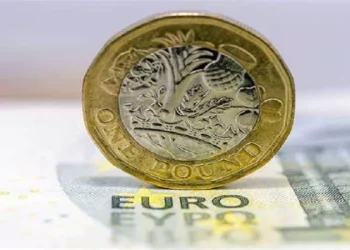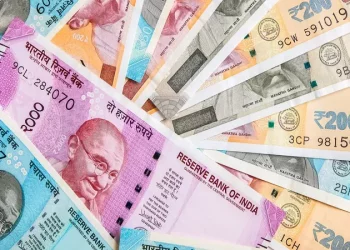The exchange rate between the US dollar (USD) and the Indian rupee (INR) is not merely a numerical value on a financial chart; it is a linchpin that holds together a significant portion of the global financial tapestry. As the world’s reserve currency, the US dollar plays a dominant role in international trade, finance, and transactions. Meanwhile, the Indian rupee, representing the economic interests of one of the most populous and rapidly – growing economies, has emerged as a key currency in South Asia and beyond. This currency pair serves as a sophisticated barometer, constantly gauging and reflecting the relative economic strength of the United States and India. The economic prowess of the US, with its highly – developed financial sector, technological innovation, and large consumer market, is juxtaposed against India’s vibrant service – based economy, expanding manufacturing sector, and a vast pool of human resources. The exchange rate mirrors how these economic fundamentals interact, whether it’s the impact of US GDP growth on investment inflows or the influence of India’s agricultural output on its trade balance.
Understanding the Basics of Exchange Rates
Defining the Exchange Rate
At its core, an exchange rate represents the value at which one currency can be exchanged for another. When considering the USD/INR exchange rate, it indicates the number of Indian rupees required to acquire one US dollar. For example, if the exchange rate is 82.50, it means that 1 US dollar can be exchanged for 82.50 Indian rupees. This rate is determined by the intricate interplay of supply and demand forces in the foreign exchange market, which operates around the clock across different time zones globally.
The Role of the Foreign Exchange Market
The foreign exchange market is the
largest and most liquid financial market in the world. It encompasses a diverse range of participants, including commercial banks, financial institutions, multinational corporations, central banks, and individual traders. The USD/INR currency pair is among the actively traded pairs in this vast market. The continuous buying and selling activities of these market players, driven by various motives such as international trade settlements, investment portfolio adjustments, and speculation, lead to the constant fluctuation of the exchange rate.
Factors Influencing the USD/INR Exchange Rate
Interest Rates
Interest rates set by the central banks of the United States and India play a significant role in shaping the USD/INR exchange rate. The Federal Reserve (Fed) in the US and the Reserve Bank of India (RBI) determine the interest rate levels in their respective economies. When the Fed raises interest rates, US – denominated assets become more attractive to investors. Higher interest rates offer greater returns on investments like US Treasury bonds and savings accounts. As a result, there is an increased demand for US dollars, causing the dollar to appreciate relative to the Indian rupee. Conversely, if the RBI raises interest rates in India, Indian assets may become more appealing, potentially leading to an increase in the demand for rupees and a strengthening of the rupee against the dollar.
Inflation Rates
Inflation differentials between the US and India also have a substantial impact on the exchange rate. If the inflation rate in the US is higher than that in India, the purchasing power of the US dollar decreases. This makes US goods and services relatively more expensive compared to those from India. Consequently, international demand for US exports may decline, reducing the demand for US dollars and leading to a depreciation of the dollar against the rupee. On the other hand, if Indian inflation exceeds US inflation, the rupee may weaken as the cost of Indian goods and services becomes relatively higher.
Economic Growth
The economic growth trajectories of the United States and India are crucial determinants of the USD/INR exchange rate. A robust economic growth in the US signals a healthy economy with abundant investment opportunities. This attracts foreign investors, who need to purchase US dollars to invest in US – based assets such as stocks and real estate. The increased demand for dollars drives up its value. Similarly, strong economic growth in India makes the country more attractive for investment, leading to an influx of foreign capital. As investors buy rupees to invest in the Indian economy, the rupee may strengthen against the dollar.
Political Stability
Political stability is essential for maintaining a stable currency value. In the United States, political events such as elections, policy changes, and geopolitical relations can impact the dollar’s value. Uncertainty surrounding political developments can lead to a decrease in the demand for dollars. In India, political stability and the effectiveness of government policies also play a vital role in influencing the rupee’s value. A stable political environment gives investors confidence, which can support the value of the rupee.
Balance of Trade
The balance of trade, which is the difference between a country’s exports and imports, has a direct bearing on the USD/INR exchange rate. If the United States has a trade deficit with India (imports from India exceed exports to India), there is a higher demand for rupees as US importers need to acquire rupees to pay for Indian goods. This increased demand can lead to an appreciation of the rupee. Conversely, if India has a trade deficit with the US, the demand for dollars will rise, putting upward pressure on the dollar’s value.
Historical Trends of the USD/INR Exchange Rate
Long – Term Movements
Over the long term, the USD/INR exchange rate has witnessed significant fluctuations. In the past few decades, the Indian rupee has generally depreciated against the US dollar. This can be attributed to various factors such as India’s growing demand for imports, differences in economic growth rates, and monetary policy divergences between the two countries. However, there have also been periods of relative stability and even appreciation of the rupee during certain economic phases.
Short – Term Volatility
In the short term, the USD/INR exchange rate can be highly volatile. News events, economic data releases, and central bank announcements can trigger sudden and significant changes. For example, if the Fed announces an unexpected change in interest rates or the RBI reveals new monetary policy measures, it can lead to immediate reactions in the foreign exchange market, causing the exchange rate to move rapidly.
Current State of the USD/INR Exchange Rate
As of current date, the USD/INR exchange rate stands at current exchange rate. However, this rate is subject to change constantly due to the dynamic nature of the factors mentioned above. Market participants, including investors, traders, and businesses, closely monitor economic indicators, central bank actions, and geopolitical developments to anticipate movements in the exchange rate. This information helps them make informed decisions regarding international trade, investment, and currency trading strategies.
Conclusion
The USD/INR exchange rate stands as a microcosm of the intricate global economic and financial dynamics, encapsulating the complex interplay between two major economies with distinct characteristics and trajectories. It is not merely a numerical value but a constantly evolving indicator that holds profound implications for a diverse spectrum of stakeholders. For international investors, the USD/INR exchange rate serves as a critical factor in portfolio diversification and risk management. A nuanced understanding of its underlying determinants allows investors to anticipate potential currency movements and strategically allocate their assets. When the Federal Reserve signals a tightening of monetary policy, leading to higher US interest rates, it often attracts capital flows from around the world, including India. Investors may then adjust their portfolios by increasing exposure to US – denominated assets, such as Treasury bonds or blue – chip stocks, in the hopes of benefiting from both currency appreciation and asset price growth. Conversely, positive economic developments in India, like the implementation of far – reaching economic reforms or strong corporate earnings reports, can prompt investors to reevaluate their positions and potentially increase their investment in Indian equities or debt, which in turn influences the demand for rupees and impacts the exchange rate.
Related topics:




























